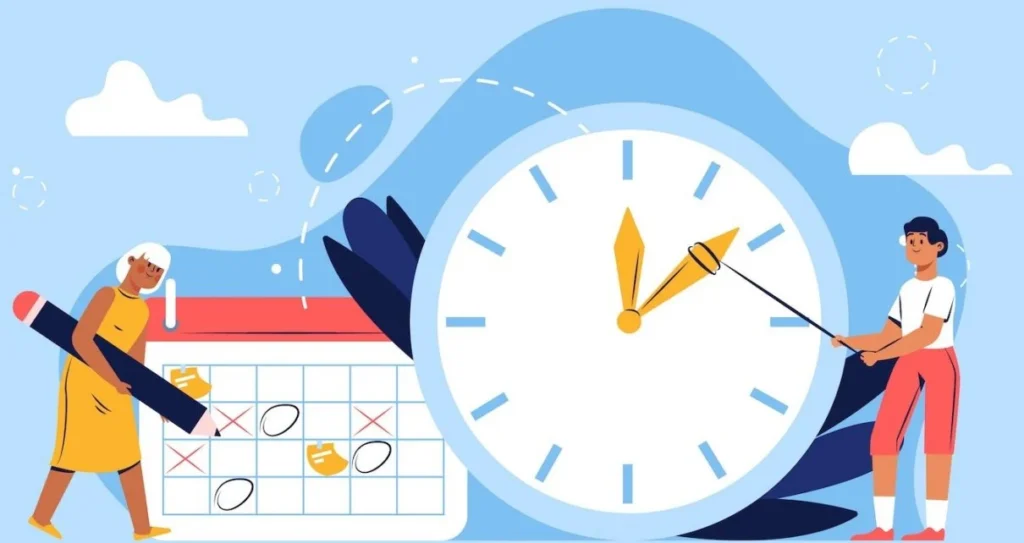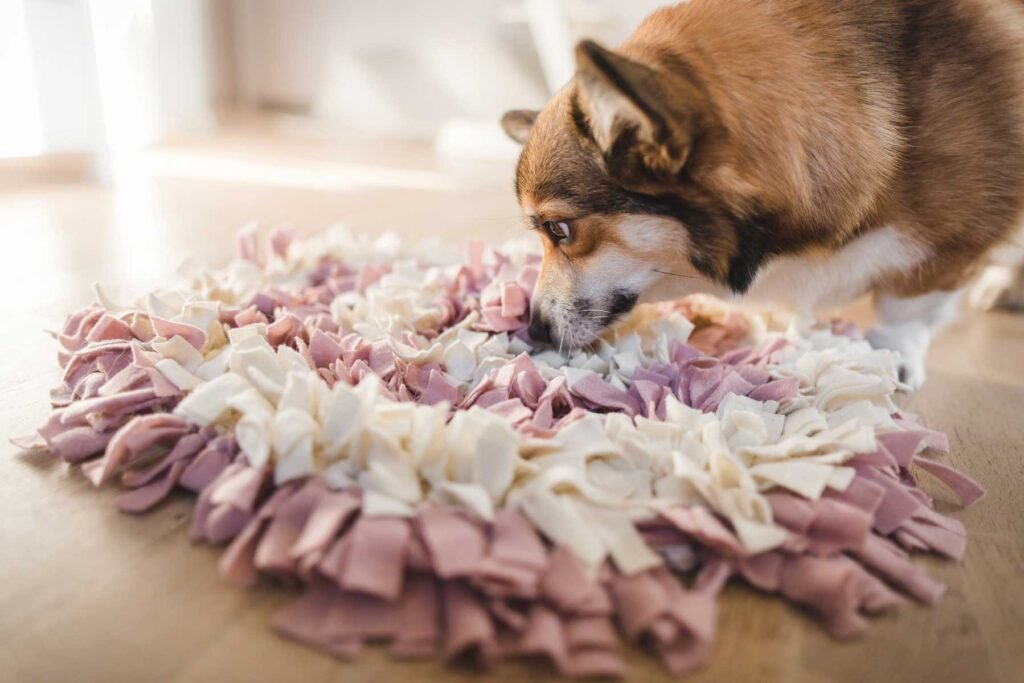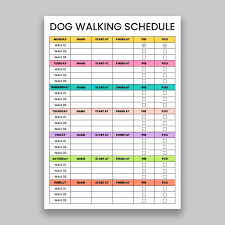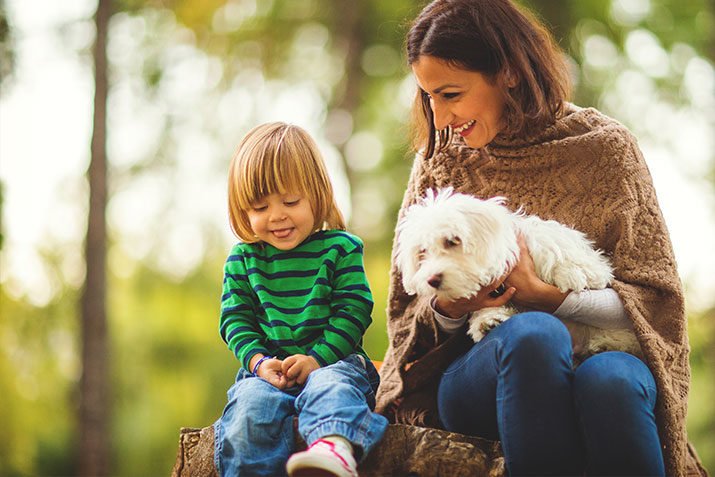A Complete Guide by BarkBliss

1. Why Routine Matters
Consistency encourages good behavior. Dogs thrive on knowing what’s coming next—predictability reduces anxiety, prevents destructive habits, and makes training more effective.
Supports physical health. Regular mealtimes and exercise help maintain weight, regulate digestion, and build resilience.
Mental well‑being. A balanced mix of activity, enrichment, and rest reduces stress, boredom, and behavioral problems like chewing or barking.
Enhances training success. Working consistent practice into daily life builds your dog’s social skills and reinforces commands more rapidly.
Strengthens your bond. Daily routines give you regular quality time together—walks, play, training—deepening your relationship with your furry friend.

Know Your Dog’s Unique Needs

🐕 Breed & Energy Level
A border collie’s day looks different from a basset hound’s. High‑energy breeds (herding, sporting, working) need more intense physical and mental stimulation. Low‑energy breeds thrive with gentler walks and relaxation.
👶 Age & Life Stage
- Puppies (8–16 weeks): Sleep 18–20 hrs/day, small frequent meals, gentle play, potty breaks every 1–2 hours.
- Adolescents (4–9 months): Teens with high energy but still need structured quiet/rest. Training focus shifts to impulse control.
- Adults (1–7 yrs): Peak energy; aim for structured exercise, training, socialization.
- Seniors (7+ yrs): More rest time, gentler play, focus on joint care and slower pace.
⚕️ Health & Lifestyle Factors
Tailor the schedule for dogs with allergies, arthritis, obesity, or anxiety. Consult your vet—they may prescribe adapted exercise, dietary plans, or rest routines.

3. Core Components of a Pup’s Daily Routine
A. Wake‑Up & Morning Care
- Consistent wake‑up time: Aligns their circadian rhythm.
- Potty break: First thing outside. Puppies may need immediate relief.
- Morning walk/play: 10–30 mins for puppies, longer for adults. Helps eliminate overnight energy and accelerates metabolism.
- Enrichment during feed preparation: Chew toys or puzzle feeders keep them busy and calm.
B. Exercise & Play
- Daily walk(s): Puppies: short, frequent walks; adults: one or two 30‑60 min sessions; high‑energy dogs may need more.
- Playtime: Tug, fetch, hide‑and‑seek, scent games for mental engagement.
- Off‑leash or dog‑park time: If safe and well‑trained, consider social outings.
C. Training & Mental Enrichment
- Regular short sessions: 5‑10 min, 2–3 times daily for reinforcement.
- Teach new commands: Tailored to age and ability; seniors can learn fun tricks to stimulate their mind.
- Puzzle toys/snuffle mats: Ideal mid‑day to reduce stress and add stimulation.
D. Feeding Times & Nutrition
- Established mealtimes: Puppies eat 3–4 times/day; adults 2 meals; seniors 1–2, depending on needs.
- Portion control: Follow vet/vet‑recommended feeding amounts.
- Quality diet: High‑quality kibble or raw/fresh food based on your veterinarian’s advice.
- Use mealtime for enrichment: Puzzle dishes or hiding kibble for sniffing fun.
E. Rest & Quiet Time
- Designated downtime: After exercise or training. Quiet zones help regulate their day.
- Napping: Puppies and seniors nap often.
- Home‑alone rest: Use crate or quiet room. Start with short absences and build up gradually.
F. Socialization
- Daily exposure: Controlled meet‑and‑greets with dogs and people.
- Environments: Car rides, vet visits, pet stores, cafés—keep it positive.
G. Bedtime
- Evening potty: Final relieve before sleep.
- Quiet activity to wind down: Gentle petting or soft-sniff walks.
- Consistent bedtime: Helps their internal clock and prevents night restlessness.

4. Sample Daily Schedules
🐾 A. Puppy (12 weeks)
| Time | Activity |
|---|---|
| 6:30 AM | Wake‑up + potty |
| 6:45 AM | Short walk or play |
| 7:15 AM | Breakfast (puzzle or bowl) |
| 7:30 AM | Training session/miniplay |
| 8:00 AM | Nap in crate |
| 10:00 AM | Potty + 15 min outside |
| 10:15 AM | Play + chew toy |
| 10:45 AM | Quiet time |
| 12:00 | Lunchtime |
| 12:15 | Potty + training |
| 12:30 | Naptime |
| 2:30 PM | Potty + short walk |
| 3:00 PM | Puzzle toy |
| 3:30 PM | Nap |
| 5:00 PM | Potty + longer walk |
| 5:30 PM | Dinner |
| 6:00 PM | Training |
| 6:15 PM | Wind‑down, chew or cuddle |
| 7:30 PM | Last potty |
| 8:00 PM | Bedtime in crate |
🐾 B. Adult Dog (3 yrs, moderately active)
- 7:00 AM – Wake, potty, 30-minute walk
- 7:45 AM – Breakfast (kibble + puzzle)
- 8:00–9:00 AM – Quiet time while you leave for work
- 12:30 PM – Midday potty/short walk
- 5:00 PM – Evening walk (45–60 min), including training bits
- 6:15 PM – Dinner + puzzle toy
- 7:00 PM – Play/training session
- 8:00 PM – Downtime, light mental game or snuggles
- 9:30 PM – Last potty
- 10:00 PM – Bedtime, crate or bed
🐾 C. Senior Dog (10 yrs, low activity)
- 7:30 AM – Wake + gentle stroll
- 8:00 AM – Breakfast (soft or senior formula)
- Rest period – Nap
- 11:00 AM – Toilet break + short controlled outing
- 12:00 PM – Small lunch or supplement if vet‑prescribed
- 2:00 PM – Gentle enrichment (sniff mat, baby food puzzles)
- 5:00 PM – Short walk
- 6:00 PM – Dinner
- 7:00 PM – Gentle massage/stretching (reserved for joints)
- 9:00 PM – Last outdoors relief
- 9:30 PM – In bed

5. Tips for Implementing & Adjusting the Routine
- Start gradually. Change in 15‑minute increments to avoid stress.
- Use timers and reminders. Especially helpful during the guinea pig/pup transition.
- Stay consistent—even on weekends. Dogs benefit from steady wake/sleep cycles.
- Adjust seasonally. Hot summers favor early or late walks; cold winters demand shorter outdoor times.
- Be flexible for life events. Vacations, vet visits, emergencies—adapt but restore routine quickly.
6. Troubleshooting Common Issues
- Boredom/Destructive behavior? Add mental stimulation—training or puzzle toys.
- Accidents in the house? Reevaluate potty schedule or crate time.
- Late‑night restlessness? Short walk after dinner, reduce evening stimulation.
- Refusing meals? Check for stress, location of bowl, or a hidden health issue.
- Over-excitement during routines? Teach calm signals; delay activity if too amped up.
7. Tools & Resources
- Timer/Phone reminders – For walk, food, potty.
- Puzzle feeders: KONG Classic, snuffle mats
- Automated feeders/watering fountains – Ideal for busy owners
- Tracking apps: Pup‑friendly habit trackers
- Training aids: Clicker, treats, target stick
- Wellness tracker: Monitor activity for health changes

8. Real-World Example: “Buddy’s Day”
Meet Buddy—a 2‑year‑old Labradoodle living with the Singh family in Rawalpindi.
- 6:30 AM: Roused by the alarm, he trots downstairs, potty in the backyard.
- 6:45 AM: 30‑minute walk by Bahria Town lake—sniff, pull, greet postman.
- 7:20 AM: Breakfast in a snuffle mat; the whole family uses this time to bond.
- 8:00–1:00 PM: Quiet time in his crate while the kids are at school; midday dog‑walker stops in.
- 1:00 PM: 15‑minute walk + a game of fetch on the compound lawn.
- 3:00 PM: Puzzle toy—chasing kibble through tubes while siblings finish homework.
- 5:30 PM: 45‑minute evening walk by the park; Puppy‑sit friend’s dog joins for socializing.
- 6:30 PM: Dinner in a slow‑feeder bowl.
- 7:00 PM: Training session: new “roll over” trick!
- 7:30 PM: Snuggles as the household settles; kids do homework around him.
- 9:00 PM: Final potty trip before lights out.
Results:
- Calm behavior at night
- Clean 10‑year‐old rug
- Sweet family bonding moments
- Active, engaged, and healthy pup
9. Conclusion & Takeaways
- Build around basic pillars: Potty, eat, exercise, train, rest, socialize, sleep.
- Tailor it: Breed, age, health, household dynamics—all factor into your plan.
- Stay consistent, but flexible: Life changes—just adapt and return to routine.
- Spot check and adjust: Use cues—restlessness, behavior changes, appetite—but consult your vet for persistent issues.
- Celebrate together moments: Training wins, quiet cuddles, shared walks—these are the joy.
By thoughtfully walking through each element and shaping it to your and your pup’s life, your website visitors at BarkBliss can create their own structured, loving routine. With consistency, enrichment, and balance, pups live better—blissfully.
Call to Action (for your website):
Invite readers to download a free “Printable Daily Routine Template,” share photos of their pup’s day with the hashtag #BarkBlissRoutine, or leave comments about their challenges and successes!
